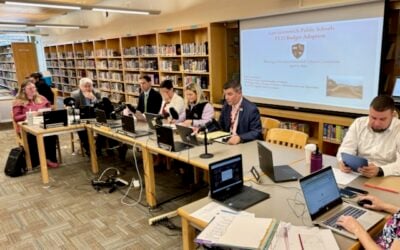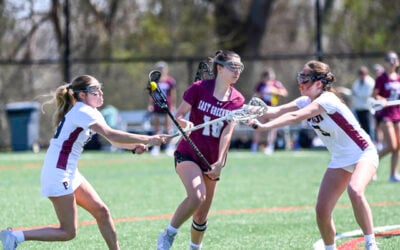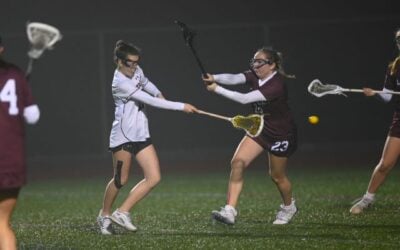By the members of the EG High School group ASAPP.
We all saw Governor Raimondo’s announcement that she was giving all but two school districts in the state the green light to physically send students to schools starting Sept. 14. Raimondo also said that individual school districts might take it upon themselves to send students to school more slowly, what she referred to as “a staggered approach.” Regardless, she gave most schools in the state the green light to move as quickly as they feel the need to, even though, as she admitted, “we still lose people [to COVID-19] every day.”
 Since then, we have seen schools across the state scramble to prepare their facilities for students and teachers to return safely. There has been a lot of journalism on the subject from the perspectives of government officials, concerned parents, and school administrators. But one perspective that hasn’t been examined as much is the student perspective. As the mental health club at EGHS, we at ASAPP wanted to share students’ perspectives on this subject. After all, students are among those most directly exposing themselves to COVID-19 once school begins, as the vast majority of them will be physically attending classes in some capacity at the beginning of the autumn semester. Using social media, we gathered anonymous poll data and quotes from students on their opinions of returning to in-person schooling. This is what they told us.
Since then, we have seen schools across the state scramble to prepare their facilities for students and teachers to return safely. There has been a lot of journalism on the subject from the perspectives of government officials, concerned parents, and school administrators. But one perspective that hasn’t been examined as much is the student perspective. As the mental health club at EGHS, we at ASAPP wanted to share students’ perspectives on this subject. After all, students are among those most directly exposing themselves to COVID-19 once school begins, as the vast majority of them will be physically attending classes in some capacity at the beginning of the autumn semester. Using social media, we gathered anonymous poll data and quotes from students on their opinions of returning to in-person schooling. This is what they told us.
Of the minority of students who are taking classes online, almost all of them were pessimistic. One student feared they wouldn’t be able to “get the support [they] need by doing online.” However, they did view online school as a necessity for them, due to the presence of an immunosuppressed guardian in the house. Another student told us that they have a chronic illness and are therefore at a much higher risk of death from COVID-19. Because of this, they will be staying home and learning online. Both of these reasons are very common among students planning on schooling from home. Many students face the realities of invisible disabilities, like immune system deficiencies and chronic illnesses, daily. They are forced into a uniquely unforgiving corner of the administrative decisions to continue schooling during the pandemic–they do not have the luxury of risking exposure to COVID-19 to possibly improve their grades.
By far the largest group of polled students, however, was the group that will be attending school in some capacity in September. More than 80 percent of those polled said that they would be attending school, either full-time or with the school’s “hybrid” plan. Of these students, most of them believed that in-person schooling was the only option they had to preserve their grades. In the words of one student, “I feel that if I don’t go in person my grades will suffer.” Another wrote, “I wish I didn’t need to do in person [schooling] but I fear that online school is difficult with hard classes.” Like our governor, students are aware of the dangers of COVID-19, but prioritize grades and keeping on top of schoolwork above mitigating the risk of exposure. Though they have more freedom to make choices with their education, the choices they are offered are limited, and neither is truly satisfactory. On one hand, they could continue online schooling the way they did at the end of the 2019-2020 school year. This is, understandably, not an appealing decision for students who had difficulties with the switch to online classes early on in the quarantine. The switch was done on short notice and with much difficulty on the parts of students and educators. Many students’ only other choice is to physically attend school, where they risk exposure to a disease that has already taken the lives of nearly 190,000 of their fellow Americans, and is projected to take the lives of hundreds of thousands more. It’s a grim and difficult decision that is unkind to those students with the freedom to make it.
This may be a consequence of the particularly high-pressure GPA culture our schools and their occupants function in. It might be a consequence of parental expectations putting pressure on students. It could be a result of students truly missing their friends and social lives and seeing school, whether in person or online, as a way to reestablish a kind of normalcy. Most likely, it is a combination of all of those factors and many others. There is no one individual or institution to blame for this mindset among students. Rather, it stems from a combination of cultural, familial, and administrative factors that have driven students to set aside their own feelings of safety and instead strive for normalcy and academic success. To the students who responded to our survey, thank you. To all students experiencing stress and anxiety from the return to school, we hear you. We as mental health advocates may not be able to change the policies that are guiding our town, state, or country. But we can remind you that you are not alone.
ASAPP is a student activist group focused on health education reform, mental health awareness among students, and community building.





 Subscribe
Subscribe